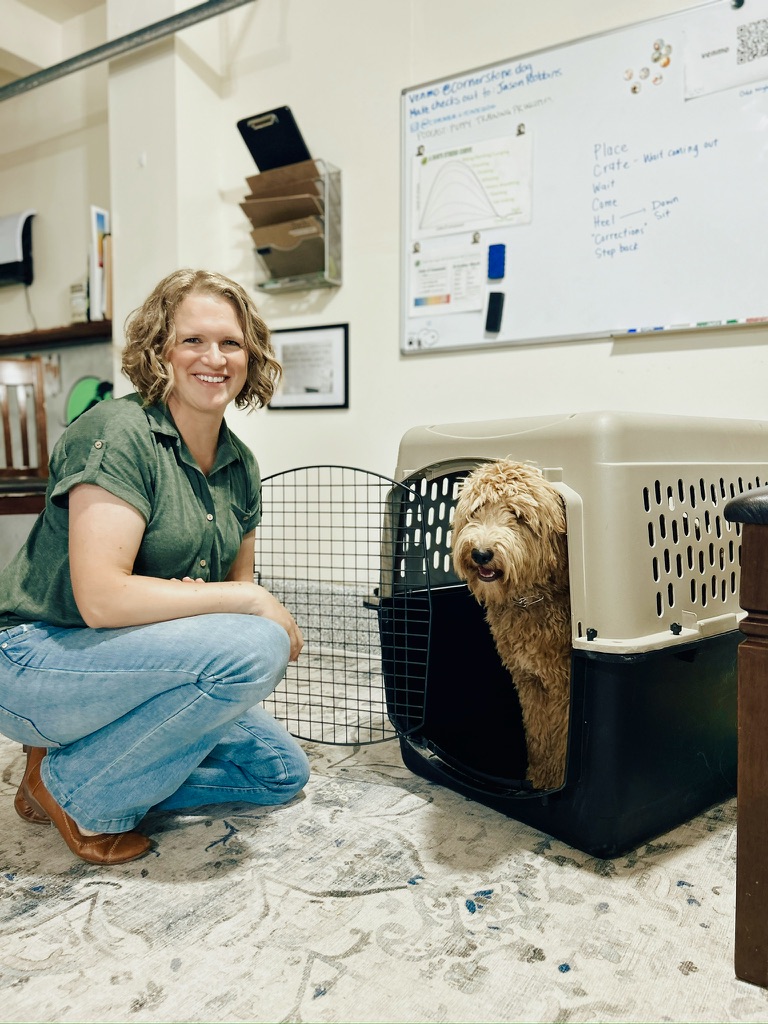How to Discipline a Puppy: The Right Way
Bringing home a new puppy is a joy-filled whirlwind—sweet kisses, playful energy, and… the occasional shoe casualty. When your puppy is nipping, chewing, or ignoring you, it’s easy to wonder, “How to discipline a puppy without ruining our bond?”
At Cornerstone Dog Training, we like to shift the word discipline to direction. Puppies don’t need punishment—they need clear communication, structure, and calm leadership. Let’s walk through what real puppy discipline looks like, using principles from our book Puppy Training Secrets.
1. Say “No” in a Way Your Puppy Understands
Words alone don’t mean much to your puppy (at least, not yet). Dogs speak pressure and release—body language and timing.
If your puppy bites or chews something off-limits, a quick flick on the slip lead communicates, “That’s not okay,” followed immediately by calm release when they stop. The leash isn’t for punishment—it’s a communication tool.

You can add a calm “No” during the pressure, and “Good” during the release. This helps your puppy connect your words with actions over time.
💡 Tip: Avoid yelling or smacking. Loud reactions create fear, not understanding. Stay calm, clear, and consistent.
2. Teach Calmness, Not Chaos
You can’t discipline crazy energy out of a puppy—but you can teach composure. Puppies don’t naturally know how to be calm; they learn it through practice.
Structured rest in the kennel, “place” training on a mat, and short, focused training sessions all teach self-control. The more often your puppy practices being calm, the more it becomes their default state.
When your puppy is overstimulated, remember: they’re not being “bad”—they’re tired, overstressed, or under-directed. Calm leadership helps them regulate.
3. Supervise and Manage
Every puppy owner’s secret weapon? Management.
Freedom should be earned, not given. If you can’t supervise, use the kennel. Puppies are like toddlers—they explore with their mouths and make mischief when left alone.

The kennel isn’t punishment—it’s protection. It gives your puppy a clear boundary and a place to decompress. Over time, this structure builds trust and confidence.
4. Reward What You Want to See
Discipline isn’t only about correcting bad behavior—it’s about reinforcing good choices. Every time your puppy does something right, mark it with a cheerful “Yes!” and reward with food or praise.
Your puppy learns faster when they know what does work, not just what doesn’t.
5. Stay Consistent—Your Puppy Is Watching
The key to every well-trained dog is consistency. If biting gets a correction today but laughter tomorrow, your puppy won’t understand the rules.
Be clear. Be kind. Follow through every time. That’s true leadership—and that’s what your puppy craves.
The Cornerstone Philosophy: Direction, Not Correction
In Puppy Training Secrets, we teach that effective puppy discipline is really about clear boundaries and calm follow-through. You’re not trying to overpower your puppy—you’re helping them find peace in knowing what’s expected.
When you lead with calm energy, use your leash as a communication tool, and follow through with love and consistency, you’ll raise a puppy who’s respectful, relaxed, and deeply bonded to you.
Ready for More Puppy Help?
Our Cornerstone Puppy Program is designed to take you step-by-step through each phase of training—from housebreaking to calm leash walking. You’ll get the videos, tools, and coaching you need to raise a dog you’ll love for life. Schedule a consult with a trainer today! FREE CONSULTATION
+ show Comments
- Hide Comments
add a comment